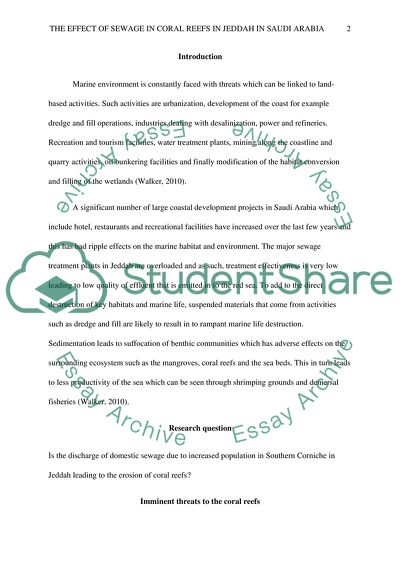Cite this document
(The Effect of Sewage in Coral Reefs in Jeddah in Saudi Arabia Assignment, n.d.)
The Effect of Sewage in Coral Reefs in Jeddah in Saudi Arabia Assignment. https://studentshare.org/environmental-studies/1845222-is-the-discharge-of-domestic-sewage-due-to-increased-population-in-southern-corniche-in-jeddah-leading-to-the-erosion-of-coral-reefs
The Effect of Sewage in Coral Reefs in Jeddah in Saudi Arabia Assignment. https://studentshare.org/environmental-studies/1845222-is-the-discharge-of-domestic-sewage-due-to-increased-population-in-southern-corniche-in-jeddah-leading-to-the-erosion-of-coral-reefs
(The Effect of Sewage in Coral Reefs in Jeddah in Saudi Arabia Assignment)
The Effect of Sewage in Coral Reefs in Jeddah in Saudi Arabia Assignment. https://studentshare.org/environmental-studies/1845222-is-the-discharge-of-domestic-sewage-due-to-increased-population-in-southern-corniche-in-jeddah-leading-to-the-erosion-of-coral-reefs.
The Effect of Sewage in Coral Reefs in Jeddah in Saudi Arabia Assignment. https://studentshare.org/environmental-studies/1845222-is-the-discharge-of-domestic-sewage-due-to-increased-population-in-southern-corniche-in-jeddah-leading-to-the-erosion-of-coral-reefs.
“The Effect of Sewage in Coral Reefs in Jeddah in Saudi Arabia Assignment”. https://studentshare.org/environmental-studies/1845222-is-the-discharge-of-domestic-sewage-due-to-increased-population-in-southern-corniche-in-jeddah-leading-to-the-erosion-of-coral-reefs.


